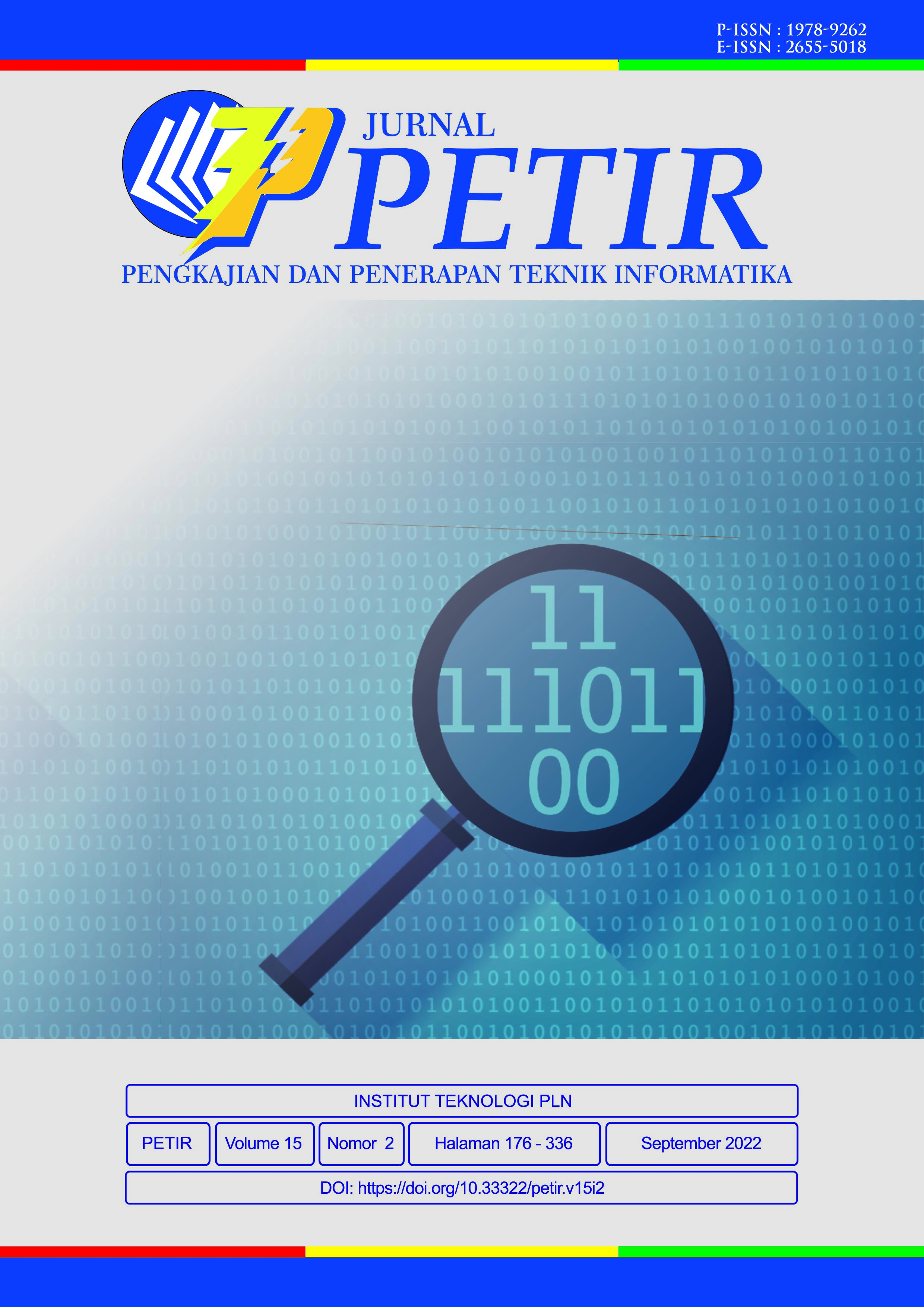Long-Short Term Memory And Gradient Boosting Model For Hydraulic System Predictive Maintenance
Main Article Content
Abstract
A hydraulic system, a drive technology where a fluid is used to create force, is used in all kinds of large and small industrial settings, as well as buildings, construction equipment, and vehicles. Well-planned predictive maintenance is considered the most efficient maintenance strategy to maintain the performance of the system. A data-driven approach such as machine learning approaches while showing increasingly effective solutions in this domain, it has remained a challenge to adopt which method is fit, robust and provide the most accurate detection. This research proposes two Long-Short Term Memory (LSTM) models to predict the condition of each feature over time and various supervised algorithms to predict predicts the type of fault and the time fault that occur based on the condition of the features over time. The result shows the LSTM model which only considering one feature in the model provides higher accuracy than the model with all features. In predicting the fault, Gradient Boosting Classifier has the best performance among other models such as Logistic Regression, K-Nearest Neighbor, Support Vector Machine, Gaussian Naïve Bayes and the other ensemble models (extreme gradient boosting, random forest classifier, AdaBoost Classifier, extra tree classifier).
Downloads
Article Details
References
[2] G. Sullivan, A. Melendez, R. Pugh, and W. Hunt, “Operations; Maintenance Best Practices – A Guide to Achieving Operational Efficiency (Release 3.0).” Pacific Northwest National Laboratory, Richland, Washington, 2010, Accessed: Nov. 09, 2019. [Online]. Available: https://www.pnnl.gov/main/publications/external/technical_reports/PNNL-19634.pdf.
[3] T. M. Allen, “U.S. Navy Analysis of Submarine Maintenance Data and the Development of Age and Reliability Profiles,” Portsmouth, 2006. Accessed: Nov. 09, 2019. [Online]. Available: https://pdfs.semanticscholar.org/27c8/71b845f0c05fee98d018da6346452a081dd9.pdf.
[4] “Reliability-Centered Maintenance Guide For Facilities and Collateral Equipment.” National Aeronautics and Space Administration, 2008, Accessed: Nov. 09, 2019. [Online]. Available: https://www.nasa.gov/sites/default/files/atoms/files/nasa_rcmguide.pdf.
[5] K. Balaji et al., “Status of data-driven methods and their applications in oil and gas industry,” Soc. Pet. Eng. - SPE Eur. Featur. 80th EAGE Conf. Exhib. 2018, 2018, doi: 10.2118/190812-ms.
[6] H. Devoid, T. Graven, and S. O. Halvorsrød, “Digitalization of oil & gas facilities reduce cost & improve maintenance operations,” Proc. Annu. Offshore Technol. Conf., vol. 5, pp. 3726–3741, 2017, doi: 10.4043/27788-ms.
[7] N. Amruthnath and T. Gupta, “A research study on unsupervised machine learning algorithms for early fault detection in predictive maintenance,” in 2018 5th International Conference on Industrial Engineering and Applications (ICIEA), Apr. 2018, pp. 355–361, doi: 10.1109/IEA.2018.8387124.
[8] A. S. Douglas Okafor Chukwuekwe, Per Schjølberg, Harald Rødseth, “Reliable , Robust and Resilient Systems?: Towards Development of a Predictive Maintenance Concept within the Industry 4 . 0 Environment,” Euromaintenance 2016 Conf., no. June, p. 10, 2016, [Online]. Available: https://www.researchgate.net/profile/Douglas_Chukwuekwe/publication/307601193_Reliable_Robust_and_Resilient_Systems_Towards_Development_of_a_Predictive_Maintenance_Concept_within_the_Industry_40_Environment/links/57cc736908ae89cd1e86cec5/Reliable-Robust-a.
[9] S. Ferreiro, E. Konde, S. Fernández, and A. Prado, “Industry 4.0?: Predictive Intelligent Maintenance for Production Equipment,” Eur. Conf. Progn. Heal. Manag. Soc., no. June 2016, pp. 1–8, 2016, [Online]. Available: https://www.phmsociety.org/sites/phmsociety.org/files/phm_submission/2016/phmec_16_069.pdf.
[10] N. Helwig, E. Pignanelli, and A. Schutze, “Condition monitoring of a complex hydraulic system using multivariate statistics,” Conf. Rec. - IEEE Instrum. Meas. Technol. Conf., vol. 2015-July, pp. 210–215, 2015, doi: 10.1109/I2MTC.2015.7151267.
[11] S. A. Helwig, Nikolai, Pignanelli Eliseo, “Detecting and Compensating Sensor Faults in a Hydraulic Condition Monitoring System,” in AMA Conference, 2015, vol. 0, pp. 641–646, doi: 10.5162/sensor2015/D8.1.
[12] T. Schneider, N. Helwig, and A. Schütze, “Automatic feature extraction and selection for classification of cyclical time series data,” Tech. Mess., vol. 84, no. 3, pp. 198–206, 2017, doi: 10.1515/teme-2016-0072.
[13] I. Goodfellow, Y. Bengio, and A. Courville, Deep Learning. MIT Press, 2016.
[14] S. Hochreiter and J. Schmidhuber, “Long Short-Term Memory,” Neural Comput., vol. 9, no. 8, pp. 1735–1780, 1997, doi: 10.1162/neco.1997.9.8.1735.
[15] J. Gong and H. Kim, “RHSBoost: Improving classification performance in imbalance data,” Comput. Stat. Data Anal., vol. 111, pp. 1–13, Jul. 2017, doi: 10.1016/J.CSDA.2017.01.005.
[16] J. Han and M. Kamber, Data Mining: Concepts and Techniques Second Edition. Oxford: Morgan Kaufman Publisher, 2006.
[17] M. S. Santos, J. P. Soares, P. H. Abreu, H. Araujo, and J. Santos, “Cross-Validation for Imbalanced Datasets: Avoiding Overoptimistic and Overfitting Approaches [Research Frontier],” IEEE Comput. Intell. Mag., vol. 13, no. 4, pp. 59–76, Nov. 2018, doi: 10.1109/MCI.2018.2866730.

